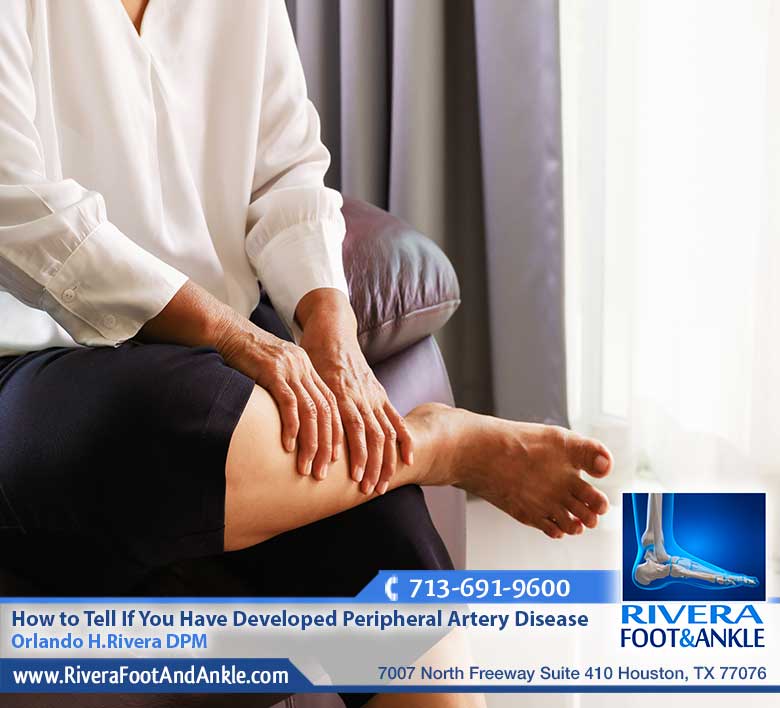
Orlando H.Rivera DPM
How to Tell If You Have Developed Peripheral Artery Disease
Peripheral Arterial Disease (PAD) commonly referred to as poor circulation, affects 8 to 12 million Americans. Those over the age of 70 have the disease at a rate of one in every five people. PAD and diabetes are the leading causes of foot or leg amputations in the United States.
Peripheral Arterial Disease (PAD) is caused by a blockage or narrowing of the arteries in the legs when fatty deposits or plaque build up. This results in a reduction of blood flow to the legs and feet.
Causes of PAD:
- Smoking
- High Cholesterol
- High Blood Pressure
- Sedentary Lifestyle
- Obesity
- Diabetes
- Genetics – a family history of peripheral artery disease, heart disease or stroke
- High levels of homocysteine, a protein component that helps build and maintain tissue
Symptoms may include:
- Fatigue, tiredness, or pain in your legs, thighs, or buttocks that occur when you walk, but goes away with rest
- Foot or toe pain at rest that often disturbs your sleep.
- Skin wounds or ulcers on your feet or toes that are slow to heal (longer than 8-12 weeks).
- You find yourself dangling your foot/leg on the side of the bed due to discomfort.
Poor circulation can lead to numerous problems, one being Arterial Ulcers. Read some of the most common signs below.
Common Signs of an Arterial Ulcer:
- Punched-out appearance
- Smooth wound edges
- Cool to the touch
- Skin is pale, shiny, taut, and thin
- Minimal to no hair growth on the limbs
- Painful, especially at night or with elevation of the leg
When to Visit Your Podiatrist
Do not ignore leg pain. It is important to discuss any leg or thigh pain that you are having with your podiatric physician since it could be a warning sign of a serious disease such as PAD. In many of our offices, we can perform non invasive testing to diagnose PAD. Early detection of PAD can offer an opportunity to treat risk factors that can slow the progression of the disease and proper referrals can be made if necessary for vascular intervention.
RIVERA FOOT & ANKLE: At Orlando H.Rivera DPM, our priority is to deliver quality care to informed patients in a comfortable and convenient setting. When you have problems with your feet, you need to turn to a podiatrist who listens and responds… an experienced doctor who knows the field and can effectively diagnose and treat your needs… a friendly physician who counsels you on the best ways to maintain and improve your health. Our physician(s) meet all these criteria. Plus, you benefit from a dedicated team of trained professionals who give you the individualized attention you deserve.

Orlando H.Rivera DPM
Foot and Ankle, Dr. Orlando Rivera, Advanced Foot & Ankle Specialist, Foot and Ankle Podiatry, Houston Foot & Ankle Surgical, Treatment of Foot and Ankle, Foot & ankle specialists, Podiatrist in houston, podiatrist in houston, Orlando H.Rivera DPM, Houston Foot Doctor, Foot and Ankle Surgeon Houston, Ankle and Foot Specialist Houston, Podiatrist Houston, Foot Pain Houston.



